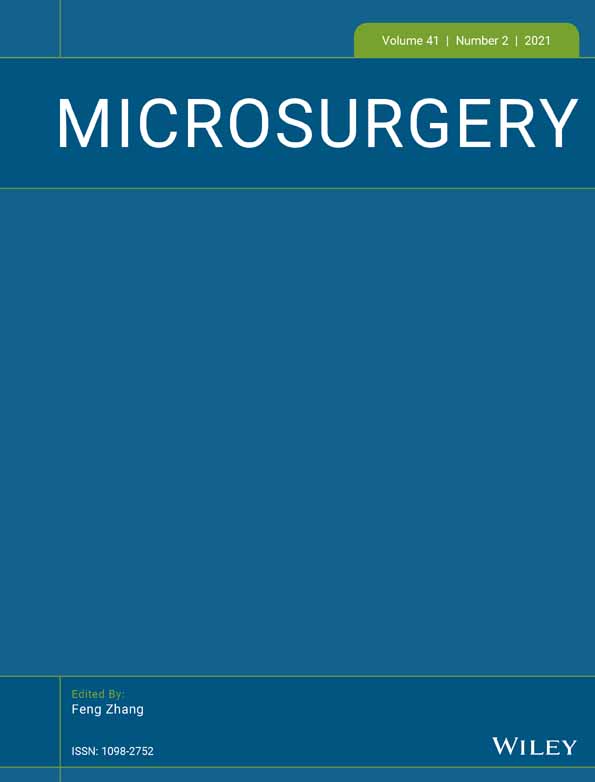Combined use of ipsilateral latissimus dorsi flap and anterolateral thigh flap to reconstruct extensive trunk defects
Abstract
Reconstruction of a full-thickness trunk defect is challenging because of the complex nature of such defects, which include the chest wall, abdominal wall, and diaphragm. We herein describe three patients in whom extensive trunk defects after sarcoma resection were reconstructed with a latissimus dorsi flap and an anterolateral thigh flap. In two patients, the defect included both the chest wall and the abdominal wall. The other patient had an extensive full-thickness chest wall defect. The size of the anterolateral thigh flap for each patient was 34 × 10 cm, 26 × 15 cm, and 23 × 5 cm, respectively. Although one patient required take-back for additional venous drainage, all wounds healed with no other complications. No respiratory dysfunction or abdominal wall hernia occurred in any patients. The combined use of a latissimus dorsi flap and an anterolateral thigh flap may provide reliable coverage of an extensive trunk defect and robust support of the chest and abdominal walls. Additionally, the availability of a two-team approach without a positional change makes this combination a versatile reconstructive option.
CONFLICT OF INTEREST
None of the authors has a financial interest in any of the products, devices, or drugs mentioned in this article.




